This article was written by Judyth Gregory-Smith.
If you have been to Myanmar (or you are going) you may have seen (or will see) amazing processions, some of which even include elephants. Such processions are for Shin Pyu, which is the ceremony where young Buddhist boys are inducted into the monastery. It is the most important celebration in a Myanmar male’s life, and last year, I was fortunate enough to be invited as a guest of honour. I have known the family for many years and the sayadaw (abbot) conducting the ceremony was an old friend of the family, so it was a particularly significant occasion.
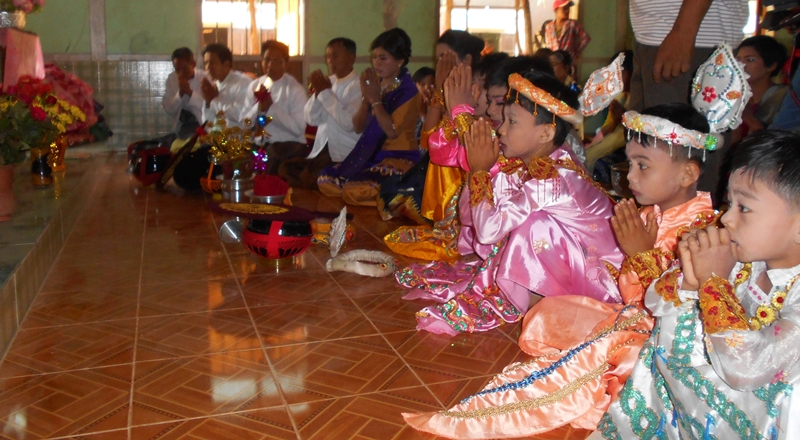
The excitement was palpable as we entered the village of Tan Nawn Kane in Magwe Division where my friend Saya Htay’s nephew, Chan Htet Win, and nine others were to be inducted into the monastery the next evening. The excitement became ever more febrile as small girls were bedecked in shining satin for such a special occasion. Their mothers were similarly attired, though mostly in milder colours. The venues for the ceremony would be divided between the monastery and the hall. We would visit both several times over the two-day ceremony, each time for a different function.
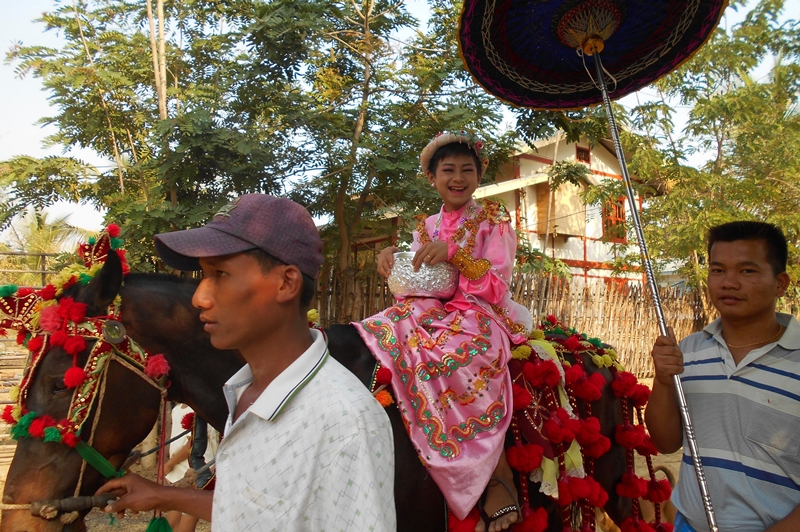
Myanmar folk are adept at erecting huge concert halls and dismantling them even more quickly after an event. For this occasion, the concert hall at Tan Nawn Kane stood just outside Chan Htet Win’s family home. It had a magnificent golden-painted – and meticulously patterned – cut-out façade. Inside in the centre of the hall there were sitting mats for everyone. Away to one side was the traditional orchestra. When they were having a break, I ventured forth to see the instruments. I could not study them when they were actually playing, or the decibels would have blown me backwards across the hall!
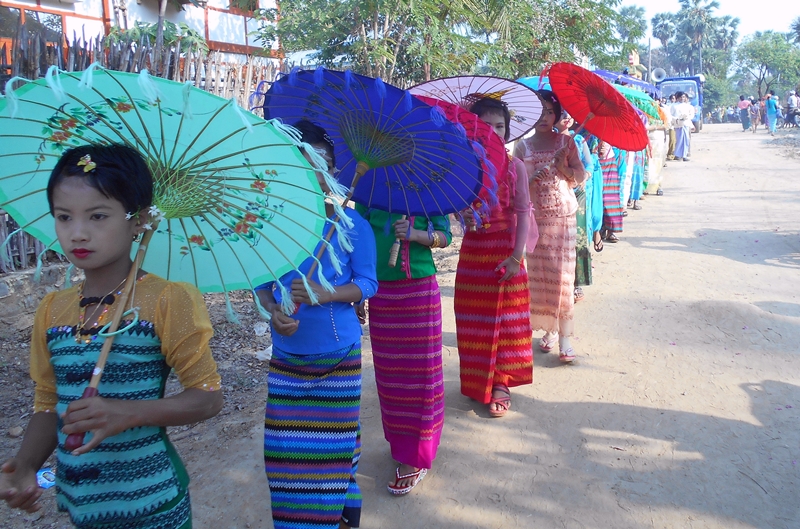
There were six drums standing, lying, or propped up, as well as six others meticulously arranged in a row, each one slightly larger than the next. I thought I had come to the end of the drums, and then, in an alcove, I found 18 others that would doubtlessly emit different sounds. Then there were gongs. Five huge gongs hung from the roof behind the orchestra, 18 lay on a raised wire circle, and another 18 hung about or were laid about near the entrance. The orchestra started again and I scurried back to my place.
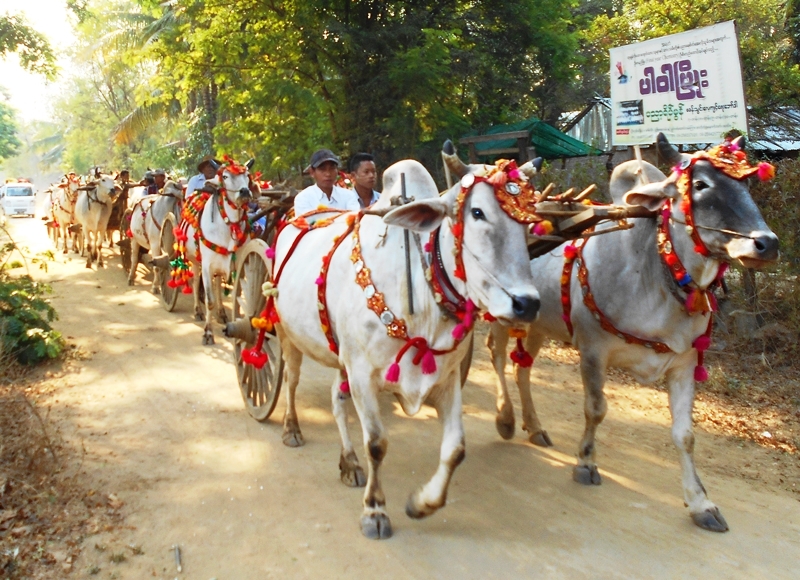
At the appointed hour, Saya Htay, her husband Win San, and everyone else (but me) set off on foot for the traditional tour of the village that would take at least a couple of hours. This was to share the special day with as many people as possible. As the guest of honour, I was not expected to walk and Ko Thin Htet Aung was deputed to take me on his motorbike. We would stop several times to allow the procession, which was about two kilometres in length, to pass by, thus allowing us to take lots of photos. Riding side-saddle on a motorbike is not my chosen mode of travel, but as I saw one after another bullock cart jolt and crack down rocky holes in the unmade road, I figured that the motorbike beat that out that style of transportation any day. I tried to maintain my composure and look confident, even as I conjured a picture of the guest of honour falling off the pillion flat on her face!
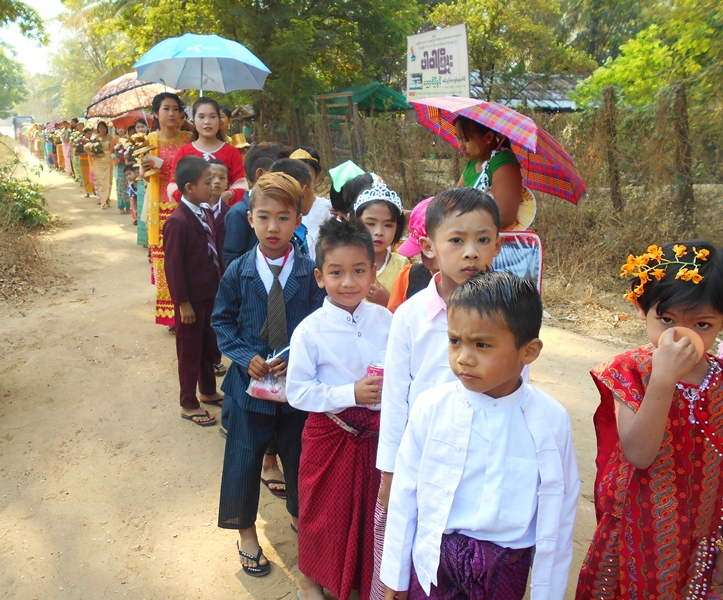
It was a long two-kilometre walk for the little ones in the procession, but they valiantly struggled on and made the procession up to the monastery to listen to the sayadaw, then back down to the hall.
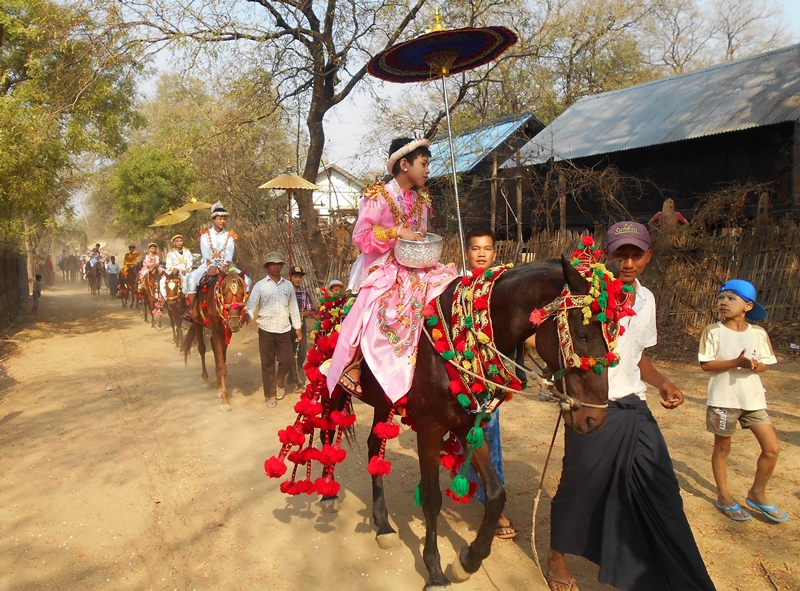
Five men across the road from the hall, meanwhile, were busily decorating the windscreen and bonnet of Win San’s taxi. In both Nyaung Pin Zauk and this village, he is the only person to own a car, and he had been asked to carry the Buddha image from the monastery down to the hall for the two nights of the celebration. At last the decorating was finished, and I was asked to get into the car. We drove to the monastery and found dozens of women, all holding bunches or vases of flowers. When the Sayadaw had said a few words, the women lined both sides of the road on which the Buddha was conveyed.
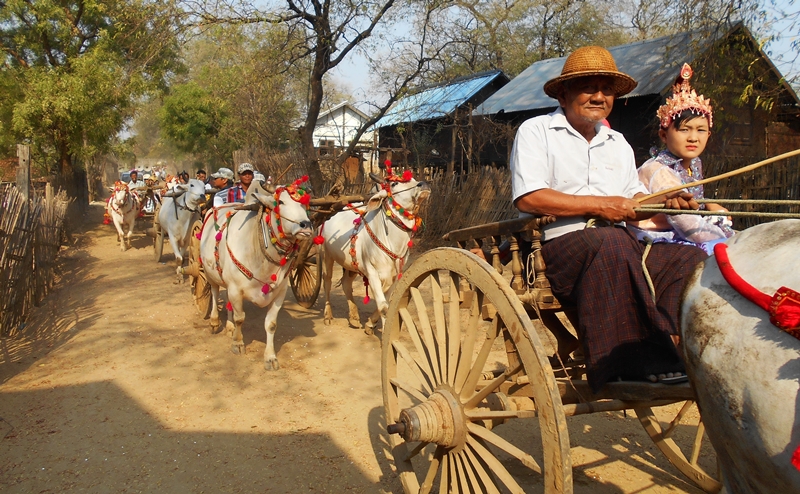
In front of our vehicle, dozens of men headed the procession as guards. They were carrying the flags of the monastery, and I learned that all monasteries have the same colours and design. They are coloured blue for peace, red for strength, yellow for gentleness, pink for good luck, and brown. (Unfortunately, Win San could not remember what the brown represented!) We passed through the lined-up ladies. I confess I was tempted to wave like the queen, but of course felt that would be going a bit far. As we drove along, I was intrigued to see that there were many children standing and looking out of their gate. Why were they not in the procession, I asked Win San, and he explained that only one child from each family was invited, otherwise there would be many hundreds, rather than just about a hundred.
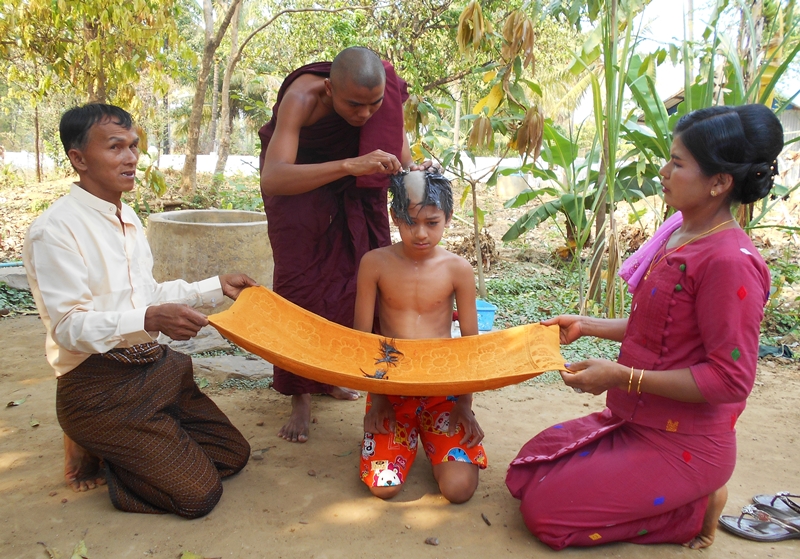
We arrived at the hall, and the Buddha was lifted reverently down from the bonnet of the car and taken inside. After the two nights of the ceremony, he would be driven back to the monastery. The significance of collecting the Buddha, I was told, was that he would want to be included in this important event.
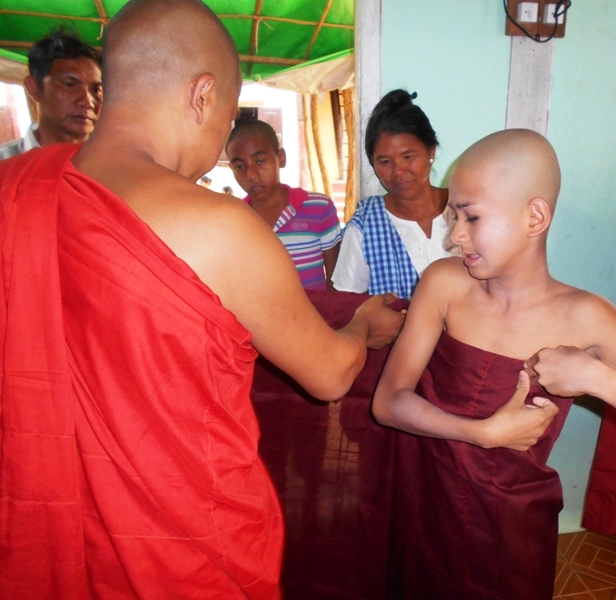
Back at the monastery, we were directed upstairs to a room where dozens of low, circular tables were covered with dishes of grapes, apples, bananas, papayas, and watermelons, all cut up and ready for eating. There were also slices of cake and assorted biscuits, for which I opted, as they had been cooked. This, I assumed was our lunch, but no. This was a pre-lunch feast!
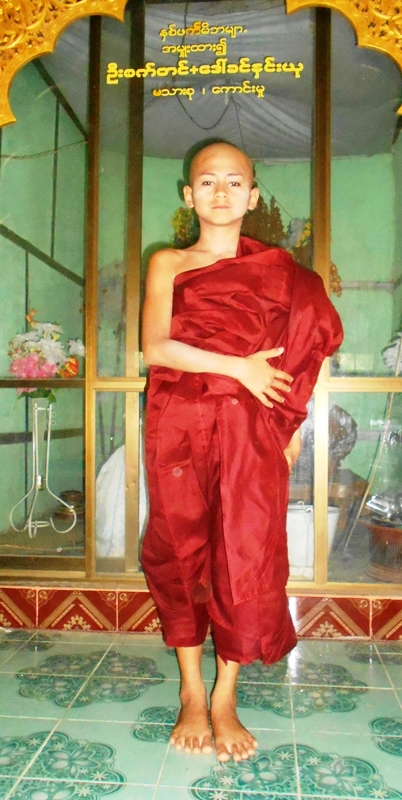
I was introduced to several sayadaws and talked with them through Win San’s interpretation. I learned that the local astrologer had found the auspicious days on which the Shin Pyu could be held as the 9th and 10th of April. It had to be after everyone had paid respect to the nats (animistic spirits) in March. If respects were not paid, the nats would be jealous and would cause trouble. Also, the days chosen had to be before Thingyan, the Myanmar New Year, which would start with the Water Festival on 12th of April.
The monks were the first to be served lunch proper, and I was bustled away. They have to take lunch seriously and fully, as it is their last meal of the day. They may eat only until 12.00 mid-day, after which time they cannot eat until they bring back the food that the villagers put into their thabiek, or food bowl, after 5.30 the next morning.
On the second day after lunch, came the important ritual of shaving the head. This tradition is to symbolize the renunciation of the world and fashion. It was the parents who shaved the head of their child and some were very emotional because, as they thought, their child was a child of theirs no longer. After this came the talk by the sayadaw to the would-be novices. All of them agreed to observe the rules required of them. Next, they were helped to put on their russet robes which was quite a complicated affair until one got used to it. At last, each of the applicants was admitted as a novice into the monastery. Most of them would stay for just a week. Some might stay a month or even several months. A few novices do go on to become monks, but not until they are 20 years of age.
Having experienced all the facets of this remarkable and auspicious ceremony, it was time for the villagers to return to their farming lives…and for me to continue writing.
Judyth Gregory-Smith, nature and travel writer, is the author of Myanmar: A Memoir of Loss and Recovery, Sulawesi: Ujung Pandang to Kendari, Southeast Sulawesi: Islands of Surprises, and Bernard the Wombat of Ugly Gully.
Photos by Win San and Saya Htay.
"ExpatGo welcomes and encourages comments, input, and divergent opinions. However, we kindly request that you use suitable language in your comments, and refrain from any sort of personal attack, hate speech, or disparaging rhetoric. Comments not in line with this are subject to removal from the site. "






















